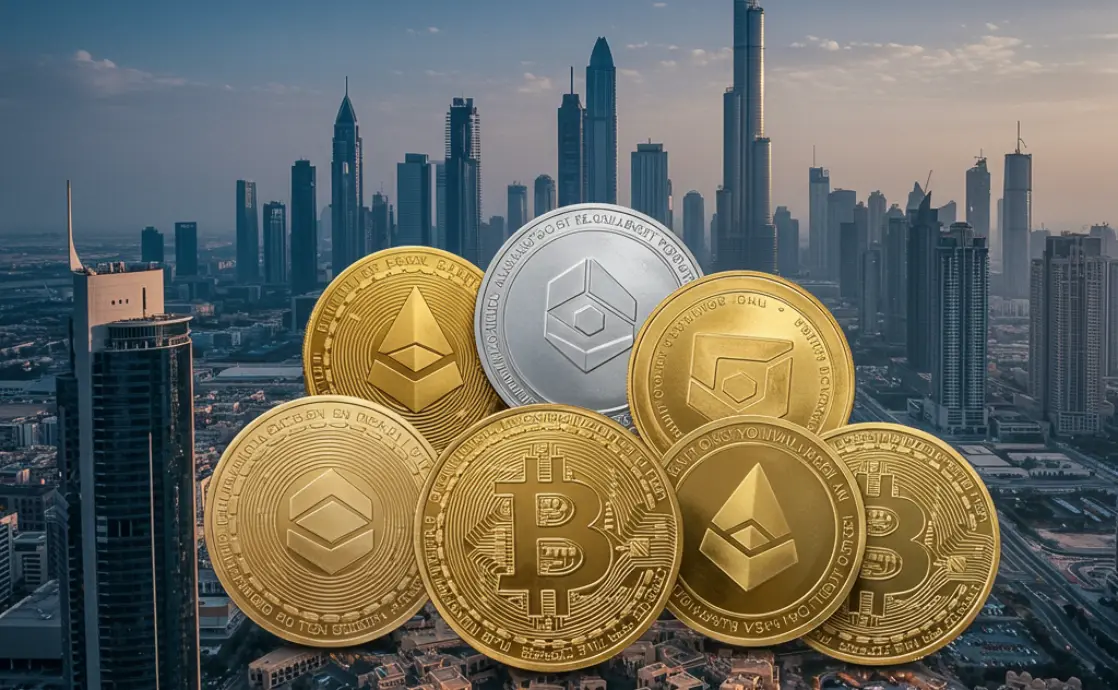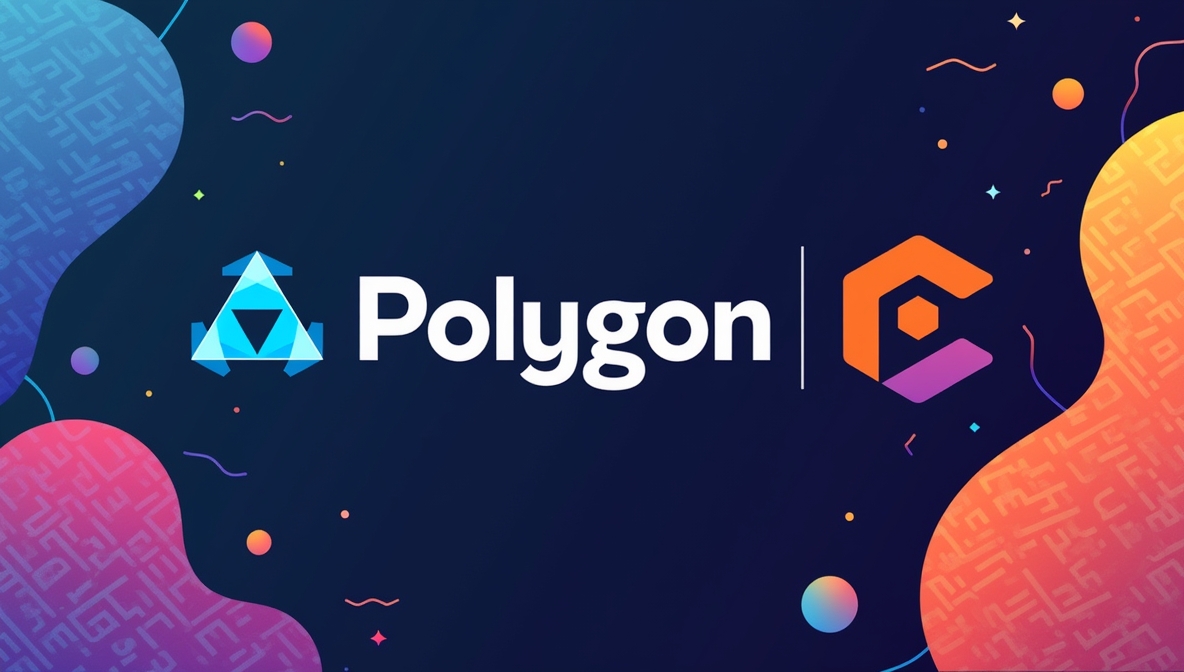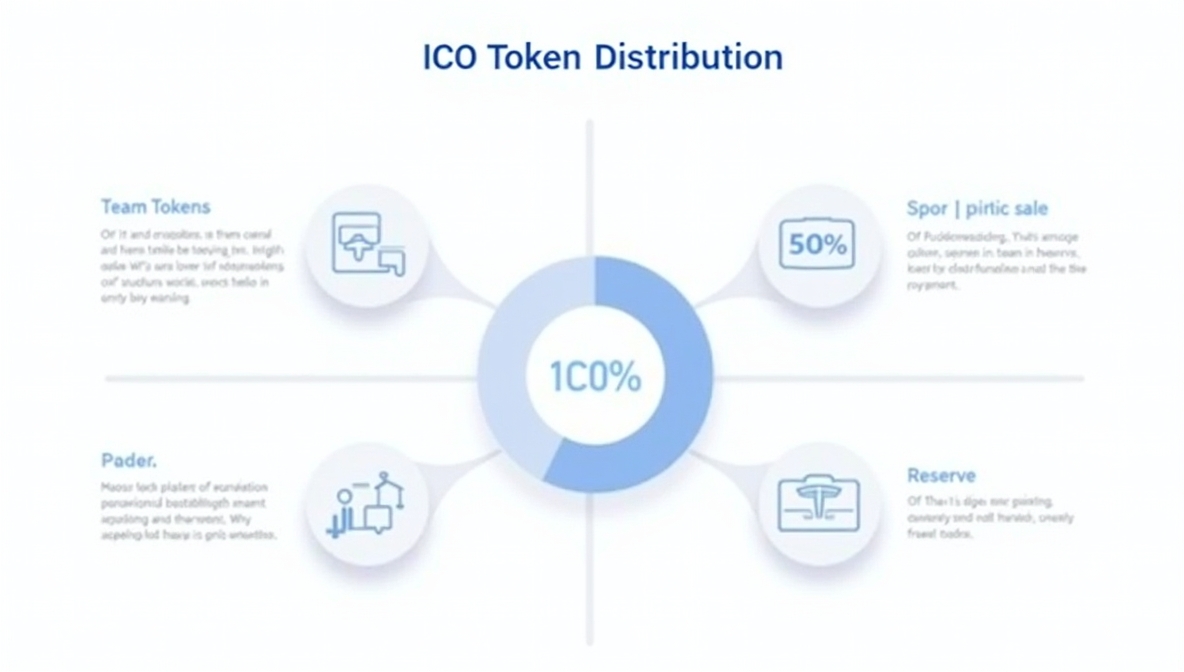Imagine owning a fraction of the Eiffel Tower, trading shares of a Renaissance painting, or investing in a groundbreaking biotech startup all with the tap of your smartphone. This isn’t a scene from a futuristic novel; it’s the rapidly evolving reality of tokenization and market making. As blockchain technology transforms traditional assets into digital tokens, the financial landscape is becoming more inclusive, efficient, and accessible than ever before. However, with this innovation comes the critical need for regulatory oversight, particularly SEC Regulation M. This article of Tokenova, delves deep into the intricate dance between tokenization, market making, and regulatory compliance, offering you a comprehensive guide to navigating this dynamic ecosystem. Whether you’re an investor, developer, or financial enthusiast, understanding these concepts is essential to thriving in the digital asset market.
Understanding Tokenization and Market Making
At its core, tokenization is the process of converting real-world assets into digital tokens that reside on a blockchain. This transformation unlocks a multitude of benefits, making assets more accessible and tradable. For instance, owning a fraction of a high-value property or a piece of exclusive art becomes feasible through tokenization. These digital tokens can represent a wide array of assets, including security tokens, utility tokens, and asset-backed tokens.
Security Tokens: These represent ownership in assets like stocks, bonds, or real estate. They are subject to securities regulations, ensuring investor protection and market integrity.
Utility Tokens: These provide access to a product or service within a blockchain ecosystem. They are not primarily intended as investment vehicles.
Asset-Backed Tokens: These are pegged to physical assets such as gold, real estate, or commodities, offering a stable value proposition.
Tokenization democratizes access to investment opportunities, allowing a broader range of participants to engage in markets that were previously exclusive to wealthy individuals or institutional players. By leveraging blockchain technology, tokenization ensures transparency, security, and immutability of ownership records, significantly reducing the risk of fraud and enhancing investor confidence.
The Role of Market Making in Tokenized Markets
Market making is the cornerstone of any liquid market. In traditional finance, market makers are firms or individuals who provide liquidity by continuously buying and selling assets, ensuring that there’s always a buyer and a seller available. In the realm of tokenized markets, the role of market makers becomes even more pivotal.
Market makers in tokenized markets use both human expertise and sophisticated algorithms to maintain liquidity and price stability. They bridge the gap between buyers and sellers, enabling seamless trading of digital assets. This is especially important in a decentralized environment where transactions can occur 24/7, across multiple jurisdictions, and without a central authority.
By providing consistent liquidity, market makers help reduce volatility and make token markets more attractive to a broader range of investors. Their ability to quickly respond to market changes ensures that token prices remain fair and reflective of their true value, fostering trust and encouraging participation.
A notable example is Uniswap, a decentralized exchange that utilizes an automated market maker (AMM) model. Uniswap’s AMM allows users to trade tokens directly from liquidity pools, which are funded by liquidity providers. This system has significantly increased liquidity in the decentralized finance (DeFi) space, enabling seamless token swaps without the need for traditional order books. (Wikipedia)
Furthermore, with the rise of Automated Market Makers (AMMs), the landscape of market making is evolving. AMMs utilize smart contracts to automate the liquidity provision process, allowing for more efficient and scalable market making practices. This integration of technology not only enhances liquidity but also democratizes the market making process, making it accessible to a wider array of participants.
The Core of SEC Regulation M and Why It Matters
SEC Regulation M is a set of rules established by the U.S. Securities and Exchange Commission (SEC) aimed at preventing market manipulation and ensuring fair trading practices during securities offerings and trading. Originally designed for traditional securities markets, Regulation M’s principles are increasingly relevant in the context of tokenized assets.
The primary objectives of Regulation M include:
- Preventing Price Manipulation: Ensuring that prices are not artificially inflated or deflated during securities offerings.
- Promoting Fairness: Mandating transparency and honest disclosure from issuers and market participants.
- Maintaining Market Integrity: Protecting investors by enforcing rules that uphold the integrity of the market.
Regulation M prohibits certain activities that could disrupt the fair and orderly trading of securities. This includes rules against stabilizing transactions, short selling during restricted periods, and other manipulative practices. By enforcing these rules, Regulation M helps to create a level playing field for all market participants, from large institutions to individual investors.
In April 2023, the SEC charged Robert Scott Murray and Trillium Capital with fraud for attempting to manipulate Getty Images Holding’s stock through a fabricated acquisition offer. After acquiring positions in Getty, they issued a fraudulent buyout proposal at $10 per share nearly double the prior closing price and began liquidating their holdings immediately after the market opened, without awaiting Getty’s response. (Source)
Why SEC Regulation M Matters for Tokenization
As tokenization bridges the gap between traditional assets and blockchain technology, many tokenized securities fall under the purview of existing securities laws, including Regulation M. This means that token issuers and market makers must adhere to the same standards of fairness and transparency that govern traditional securities.
Regulation M’s impact on token markets ensures that the digital asset ecosystem remains trustworthy and reliable. By enforcing strict guidelines on how tokens are offered, traded, and marketed, Regulation M helps prevent fraudulent activities such as pump-and-dump schemes, insider trading, and other manipulative practices that could undermine investor confidence.
In an environment where tokenized assets are gaining traction, adherence to Regulation M not only fosters investor trust but also paves the way for broader institutional participation. Investors are more likely to engage with tokenized markets when they are confident that regulatory frameworks are in place to protect their interests.
Moreover, as global financial markets become more interconnected, Regulation M’s principles can serve as a benchmark for international regulations, promoting consistency and cooperation across borders. This harmonization is crucial for the seamless operation of tokenized markets on a global scale, ensuring that investors receive the same level of protection regardless of where they are based.
Tokenization Trends and Real-World Applications
The landscape of tokenization is vibrant and rapidly expanding, driven by advancements in blockchain technology and evolving regulatory frameworks. Here are some notable trends shaping the future of tokenized markets:
Real Estate Tokenization: High-value properties are being fractionalized into digital tokens, allowing a broader base of investors to participate in real estate markets. Platforms like RealT and Propy are leading the charge, offering tokenized ownership of properties across the globe. This trend not only enhances liquidity in the real estate market but also provides investors with the flexibility to diversify their portfolios without the need for significant capital investment.
Art and Collectibles: The art world is embracing tokenization by creating digital representations of valuable artworks. This not only democratizes access to art investment but also enhances liquidity in a traditionally illiquid market. Platforms like Masterworks are enabling investors to own shares of iconic art pieces, thereby opening up new avenues for wealth generation and asset diversification.
Equity Tokenization: Established companies are issuing tokenized shares, providing investors with a seamless way to buy and sell equity. This trend is particularly appealing to startups and tech firms looking to leverage blockchain for capital raising and investor engagement. Companies like tZERO are at the forefront, offering platforms that facilitate the issuance and trading of tokenized equities.
Commodities and Natural Resources: Tokenization is being applied to commodities like gold, oil, and agricultural products, offering investors a secure and transparent way to trade these assets. Companies like Paxos are pioneering the tokenization of precious metals, making them easily tradable on digital platforms. This approach not only enhances liquidity but also provides investors with the flexibility to diversify their holdings across various asset classes.
Real-World Applications
To illustrate the practical impact of tokenization and market making, consider the following examples:
Fractional Real Estate Investment: A luxury apartment in New York City is tokenized into 1,000 digital shares. Investors from around the world can purchase these tokens, allowing them to own a portion of the property without the need for significant capital investment. Market makers ensure that there’s always liquidity, enabling investors to buy or sell their tokens as needed. For instance, RealT has successfully implemented this model, attracting a diverse pool of investors and providing steady returns through rental income.
Tokenized Art Shares: An iconic painting by a renowned artist is tokenized, with each token representing a fraction of ownership. Investors can trade these tokens on digital exchanges, enjoying the benefits of owning a share of a valuable artwork. Market makers facilitate these trades, maintaining stable prices and providing liquidity. Masterworks has demonstrated the viability of this approach, allowing investors to gain exposure to high-value art pieces without the barriers of traditional art investment.
Startup Equity Tokens: A tech startup issues equity tokens to raise capital, allowing investors to buy shares digitally. These tokens can be traded on regulated exchanges, with market makers ensuring that there’s always a buyer and seller, thus providing continuous liquidity and fair pricing. For example, tZERO has enabled startups to tokenize their equity, offering investors a transparent and efficient way to participate in early-stage investments.
These applications highlight how tokenization and market making are revolutionizing traditional investment models, making them more inclusive, efficient, and transparent. By leveraging blockchain technology and automated market making systems, tokenized markets can offer unprecedented levels of accessibility and liquidity, attracting a broader range of investors and fostering greater participation in diverse asset classes.
SEC Regulation M’s Impact on Tokenization and Market Making
Adhering to SEC Regulation M is crucial for market makers operating in tokenized markets. These requirements are designed to prevent market manipulation and ensure fair trading practices. Here are some key compliance obligations for token market makers:
Maintaining Fair and Orderly Markets: Market makers must avoid practices that could distort token prices, such as wash trading or spoofing. They are required to provide fair bid and ask prices, ensuring that tokens are always available for trading at transparent prices. This involves implementing strict internal policies and monitoring systems to detect and prevent manipulative activities.
Disclosure and Reporting: Transparency is paramount. Market makers need to disclose their trading activities and any potential conflicts of interest. Regular reporting to regulatory authorities helps maintain market integrity and investor trust. This includes providing detailed information about their liquidity provision strategies, trading volumes, and any significant changes in their operations.
Anti-Manipulation Measures: Market makers must implement measures to detect and prevent manipulative trading behaviors. This includes monitoring trading patterns, conducting regular audits, and employing advanced analytics to identify suspicious activities. Additionally, market makers should have protocols in place to respond swiftly to any detected manipulative practices, ensuring that the market remains fair and transparent.
Compliance Infrastructure: Investing in robust compliance infrastructure is essential. This includes using RegTech solutions for real-time monitoring, automated reporting systems, and hiring compliance officers to oversee regulatory adherence. A strong compliance infrastructure not only helps in meeting regulatory requirements but also enhances operational efficiency and reduces the risk of non-compliance penalties.
Training and Education: Ensuring that all team members are well-versed in Regulation M and other relevant regulations is critical. Regular training programs and educational initiatives can help staff understand the importance of compliance and equip them with the knowledge to identify and mitigate potential compliance risks.
Challenges Faced by Market Makers in Tokenized Markets
Market makers in tokenized markets face unique challenges due to the decentralized nature of blockchain and evolving regulatory frameworks. Below are the key challenges and proposed solutions for each:
Regulatory Ambiguity
One of the most pressing hurdles market makers face is the ambiguity surrounding token classification and regulation. For instance, determining whether a token qualifies as a security, utility, or commodity often depends on varying and evolving jurisdictional standards. To tackle this, leading firms have adopted a proactive approach, staying ahead of regulatory changes by collaborating with legal experts and actively engaging with regulators to clarify expectations. This ensures operations remain compliant while minimizing business disruptions.
Maintaining Liquidity Without Breaching Compliance
Striking a balance between providing liquidity and adhering to anti-manipulation rules can be delicate. For example, maintaining bid-ask spreads that comply with SEC Regulation M while ensuring continuous trading activity is a nuanced task. Advanced analytics tools such as Chainalysis and blockchain surveillance solutions now empower market makers to monitor trading patterns in real-time, allowing them to respond to market dynamics without inadvertently crossing regulatory lines.
Tackling Jurisdictional Fragmentation
Tokenized markets are inherently global, but varying regulations across jurisdictions complicate operations. Companies are addressing this by adopting a tailored approach setting up compliance frameworks specific to each region while leveraging technology to streamline cross-border transactions. Engaging compliance officers with expertise in multi-jurisdictional regulation has further enabled firms to navigate this fragmented landscape.
Balancing Innovation with Cost Efficiency
Implementing robust compliance infrastructure, such as automated reporting and monitoring systems, can be expensive, particularly for small and mid-sized market makers. However, scalable RegTech solutions like ComplyAdvantage have emerged as game-changers. These platforms provide cost-effective, automated risk assessment and reporting capabilities, allowing firms to remain agile without overextending their resources.
Integrating Compliance into Blockchain Systems
The decentralized and transparent nature of blockchain presents unique challenges for embedding compliance measures. To address this, market makers are partnering with blockchain developers to integrate compliance protocols directly into smart contracts. Regular security audits by firms like CertiK ensure these solutions are not only compliant but also robust against potential vulnerabilities.
Case Studies: Regulation M Compliance in Token Markets
In the evolving landscape of token markets, compliance with SEC Regulation M is crucial to prevent market manipulation and ensure fair trading practices. The following case studies illustrate the challenges and enforcement actions related to Regulation M in tokenized markets:
1. Telegram’s TON Blockchain and Gram Tokens
In 2018, Telegram initiated the development of the Telegram Open Network (TON) blockchain and planned to distribute its native cryptocurrency, Gram tokens. The U.S. Securities and Exchange Commission (SEC) intervened in October 2019, obtaining a temporary restraining order to halt the distribution. The SEC argued that the sale of Gram tokens constituted an unregistered securities offering, as the initial purchasers would act as underwriters, leading to an unregistered distribution in the secondary market.
The court concurred, viewing the entire scheme as a single unregistered securities offering. Consequently, Telegram ceased its involvement with TON and, in June 2020, settled with the SEC by agreeing to return $1.22 billion to investors and paying an $18.5 million penalty. (Wikipedia)
2. Ripple Labs and XRP Tokens
Ripple Labs, the company behind the XRP cryptocurrency, faced legal challenges concerning the classification of XRP as a security. In December 2020, the SEC charged Ripple and its executives with conducting a $1.3 billion unregistered securities offering through the sale of XRP. The SEC alleged that Ripple’s actions deprived investors of necessary disclosures and protections.
In July 2023, a district court ruled that XRP was not a security when sold on public exchanges but could be considered a security in institutional sales. This nuanced decision highlighted the complexities of applying existing securities laws to digital assets and underscored the importance of compliance with regulations like Regulation M to prevent market manipulation and protect investors. (Wikipedia)
These cases underscore the critical importance of adhering to securities regulations in token markets. They highlight the SEC’s commitment to enforcing compliance to maintain market integrity and protect investors from potential manipulation and fraud.
Read More: Asset Tokenization Regulation: Navigating Compliance in 2025
Automated Market Makers (AMMs) and Their Growing Importance
Automated Market Makers (AMMs) are decentralized systems that use smart contracts to facilitate trading without the need for a traditional order book or centralized market maker. Instead, AMMs rely on liquidity pools funded by users, allowing anyone to trade tokens directly against these pools.
In an AMM, the price of a token is determined algorithmically based on the ratio of tokens in the pool. Popular AMM platforms like Uniswap and Balancer have revolutionized decentralized finance (DeFi) by providing continuous liquidity and enabling decentralized trading. These platforms enable users to swap tokens seamlessly, contribute to liquidity pools, and earn fees from the trades executed against their liquidity.
AMMs operate on the principle of constant product formulas, where the product of the quantities of the two tokens in the pool remains constant. This ensures that prices adjust automatically based on supply and demand, providing a dynamic and efficient pricing mechanism. By eliminating the need for centralized intermediaries, AMMs align with the decentralized ethos of blockchain technology, promoting transparency and inclusivity in financial markets.
The Role of AMMs in Enhancing Token Liquidity
AMMs play a critical role in ensuring liquidity in tokenized markets. By allowing users to contribute to liquidity pools, AMMs democratize liquidity provision, making it accessible to a broader range of participants. This continuous liquidity ensures that tokens can be traded at any time, reducing the dependency on traditional market makers.
Advantages of AMMs:
- Decentralization: AMMs operate without a central authority, aligning with the decentralized ethos of blockchain technology.
- Accessibility: Anyone can become a liquidity provider, earning fees from trades executed against the pool.
- Efficiency: AMMs enable instant trading without the need for counterparties, enhancing the speed and efficiency of transactions.
- Transparency: Smart contracts provide transparent and immutable records of all transactions and liquidity provisions, ensuring trust and accountability.
AMMs vs. Traditional Market Makers
While traditional market makers rely on human expertise and inventory management, AMMs utilize automated algorithms and liquidity pools. This fundamental difference introduces both opportunities and challenges in tokenized markets.
Advantages of AMMs:
- 24/7 Operation: AMMs facilitate continuous trading, regardless of time zones or market hours.
- Lower Barriers to Entry: Individuals can contribute liquidity without needing significant capital or expertise.
- Scalability: AMMs can handle a large number of tokens and transactions without the limitations of traditional order books.
Challenges of AMMs:
- Impermanent Loss: Liquidity providers may experience losses if the price of tokens in the pool changes significantly.
- Smart Contract Risks: Vulnerabilities in smart contracts can lead to exploits and loss of funds.
- Regulatory Uncertainty: The decentralized nature of AMMs poses challenges for regulatory compliance, particularly concerning SEC Regulation M.
AMMs represent a significant innovation in market making, offering enhanced liquidity and efficiency. However, they also introduce new complexities and regulatory challenges that must be addressed to ensure their sustainable integration into tokenized markets.
Regulation M and the Rise of AMMs
The decentralized and automated nature of AMMs presents unique challenges for regulatory compliance, especially under SEC Regulation M. Unlike traditional market makers, AMMs operate without a central authority, making it difficult to enforce compliance measures directly.
Key Regulatory Considerations:
- Transparency Standards: AMMs must ensure that pricing algorithms are transparent and not prone to manipulation. This involves making the smart contract code accessible and understandable to regulators and market participants.
- Decentralization Dilemmas: Regulators must determine how existing rules apply to decentralized platforms where control is distributed among users. This includes questions about who is responsible for enforcing compliance measures within AMMs.
- Accountability: Identifying responsible parties for compliance within AMMs can be challenging due to their decentralized nature. It is essential to establish mechanisms that hold developers, liquidity providers, and other stakeholders accountable for maintaining regulatory standards.
Infographic Needed: A flowchart showing steps for compliance: “Token Issuance,” “AML/KYC Checks,” “Market Monitoring,” and “Reporting to SEC.”
Overcoming Compliance Challenges
To align AMMs with Regulation M, several strategies can be employed:
Embedding Compliance in Smart Contracts: Integrate compliance mechanisms directly into the code that governs AMMs. This can include automated KYC/AML checks, trade halts in case of suspicious activity, and other safeguards to prevent manipulative practices. For example, Balancer has explored incorporating regulatory compliance features within their smart contracts to enhance transparency and trust.
Collaboration with Regulators: Engage with regulatory bodies to develop frameworks that recognize the unique aspects of AMMs while ensuring they adhere to essential principles of fairness and transparency. Open dialogues and cooperative efforts can lead to more effective and adaptable regulatory solutions tailored to decentralized platforms.
Third-Party Audits and Certifications: Regular audits by independent firms can help verify that AMMs comply with regulatory standards. Certifications can provide an additional layer of trust for investors and users, demonstrating that the platform meets industry best practices and regulatory requirements. Platforms like Uniswap have undergone extensive security audits to ensure the integrity and security of their smart contracts.
Potential Regulatory Adaptations for AMMs
As AMMs continue to gain prominence, regulatory bodies may introduce specific guidelines tailored to their operations. Potential adaptations include:
Hybrid Models: Combining decentralized AMMs with centralized compliance oversight to balance innovation with regulatory adherence. This could involve implementing governance structures that include compliance officers or regulatory liaisons who oversee AMM operations.
Dynamic Regulation: Implementing adaptive regulatory frameworks that evolve alongside technological advancements, ensuring that rules remain relevant and effective. This approach allows regulations to keep pace with the rapid innovations in decentralized finance, providing a flexible and responsive regulatory environment.
Industry Standards: Developing industry-wide best practices for AMMs, promoting consistency and facilitating easier compliance across different platforms. Collaborative efforts within the blockchain and DeFi communities can lead to standardized compliance protocols that streamline regulatory adherence for all participants.
Real-World Case Studies: AMMs and Regulation M
Automated Market Makers (AMMs) have revolutionized decentralized finance (DeFi) by enabling seamless and permissionless trading of digital assets. However, their integration within existing regulatory frameworks presents both opportunities and challenges.
The following case studies highlight instances where entities operating in tokenized markets faced regulatory scrutiny due to alleged manipulative practices:
1. ZM Quant and Gotbit: Market Manipulation Schemes
In October 2024, the SEC charged ZM Quant and Gotbit, firms purporting to be market makers, along with their employees, for engaging in schemes to manipulate the markets for various crypto assets offered and sold as securities to retail investors. The SEC’s complaint alleged that these firms provided “market-manipulation-as-a-service,” which included generating artificial trading volume and manipulating the price of crypto assets.
They employed algorithms that, at times, generated quadrillions of transactions and billions of dollars of artificial trading volume each day, creating a false appearance of an active trading market. These actions are precisely the type of manipulative practices that Regulation M aims to prevent, as they can deceive investors and disrupt fair market conditions. SEC
2. CLS Global: Undercover Market Manipulation
In a related enforcement action, the SEC charged CLS Global, another so-called market maker, for participating in a scheme to manipulate the market of a crypto asset offered and sold as a security. This case was unique as the crypto asset was created at the direction of the Federal Bureau of Investigation (FBI) as part of a parallel investigation into potential market manipulation in the crypto asset industry. CLS Global’s involvement in such manipulative activities underscores the importance of Regulation M in deterring fraudulent schemes and maintaining the integrity of securities markets. (SEC)
These cases illustrate the challenges and regulatory risks associated with operating as market makers in tokenized markets. They highlight the SEC’s commitment to enforcing compliance with regulations like Regulation M to prevent market manipulation and protect investors. Entities involved in AMMs and other DeFi platforms must remain vigilant and proactive in ensuring their operations adhere to applicable securities laws to foster a fair and transparent market environment.
Strategies for Compliance and Effective Market Making in Tokenized Markets
Staying ahead of regulatory updates is crucial for market makers to operate within legal boundaries.
For Market Makers: Navigating Regulation M
Adopt Advanced RegTech Solutions: Utilize regulatory technology (RegTech) tools for real-time monitoring, automated reporting, and compliance management. These solutions can streamline the process of adhering to Regulation M, reducing the burden on market makers. Tools like Chainalysis and Elliptic offer blockchain analytics that can help identify and prevent fraudulent activities.
Establish Transparent Operations: Maintain clear and honest communication with stakeholders, providing detailed disclosures about trading activities and compliance measures. Transparency builds trust and ensures that all parties are aware of regulatory obligations. This involves publishing regular compliance reports and ensuring that all trading activities are fully documented and accessible for review.
Implement Robust Anti-Manipulation Measures: Develop and enforce policies to prevent manipulative trading practices, such as wash trading and spoofing. Regularly audit trading activities to identify and address any potential compliance issues. This can involve setting up automated systems that flag unusual trading patterns and conducting manual reviews to ensure compliance.
Your Trusted Partner in Compliance and Market Innovation
As tokenized markets grow, the need for tailored compliance solutions and effective market strategies becomes critical. Leveraging the expertise of industry leaders, cutting-edge technologies, and a deep understanding of regulatory landscapes, organizations can confidently navigate the challenges of SEC Regulation M and global market standards.
Whether you need advanced tools for real-time trade monitoring, automated reporting systems, or strategies for maintaining liquidity while adhering to anti-manipulation rules, solutions like those offered by Tokenova ensure your operations are both efficient and compliant. Build trust, enhance investor confidence, and secure your position in the ever-evolving digital asset market.
Continuous Education and Training: Invest in ongoing education for team members to stay updated on the latest regulatory developments and best practices in compliance. Knowledgeable staff are better equipped to navigate the complexities of Regulation M. Regular training sessions and workshops can help ensure that all team members understand their roles and responsibilities in maintaining compliance.
Read More: Tokenization and Tax Regulation: A Strategic Guide
For AMM Developers and Operators
Compliance-by-Design: Integrate compliance features directly into the design of AMM protocols. This includes automated KYC/AML checks, trade monitoring, and the ability to halt trading in case of suspicious activities. By embedding these features into the smart contracts, developers can ensure that compliance is maintained without relying on manual interventions.
Enhance Smart Contract Security: Conduct regular audits of smart contracts to identify and fix vulnerabilities. Secure smart contracts reduce the risk of exploits and ensure that compliance measures are effectively enforced. Partnering with reputable auditing firms like CertiK or Quantstamp can help enhance the security and reliability of AMM platforms.
Collaborate with Legal Experts: Work closely with legal advisors to interpret and implement Regulation M requirements. Expert guidance helps ensure that AMM platforms meet regulatory standards while maintaining operational efficiency. This collaboration can involve regular consultations, legal audits, and participation in regulatory discussions to stay ahead of compliance requirements.
User Education and Transparency: Educate users about the platform’s compliance measures and the importance of adhering to regulatory guidelines. Transparent communication fosters a culture of compliance and responsibility among users. This can involve providing detailed FAQs, compliance documentation, and regular updates on regulatory changes and their impact on the platform.
Collaborative Approaches to Regulatory Compliance
Partnerships with Regulators: Engage in open dialogues with regulatory bodies to shape and refine compliance frameworks that address the unique challenges of tokenized markets and AMMs. Building strong relationships with regulators can lead to more favorable regulatory outcomes and a clearer understanding of compliance requirements.
Industry Consortiums and Standards: Participate in industry groups and consortiums aimed at developing standardized compliance practices. Collaborative efforts can lead to more consistent and effective regulatory solutions across the sector. Organizations like the Blockchain Association and the Crypto Council for Innovation work towards creating unified standards for compliance in the blockchain industry.
Shared Best Practices: Exchange knowledge and strategies with other market makers and AMM operators to identify and implement best practices for Regulation M compliance. Learning from peers enhances overall industry standards and resilience. Hosting or attending industry forums, webinars, and workshops can facilitate the sharing of valuable insights and experiences.
By adopting these strategies, market makers and AMM developers can navigate the complexities of Regulation M effectively, ensuring compliance while maintaining the efficiency and accessibility that tokenized markets offer.
Future Outlook: Tokenization, Market Making, and Regulatory Evolution
As tokenized markets mature, regulatory frameworks will continue to adapt, influencing how market makers operate and ensuring a balance between innovation and investor protection.
Evolving Nature of Tokenized Markets and Market Making
The landscape of tokenization and market making is in constant flux, driven by technological advancements and changing investor demands. As more assets become tokenized and the line between traditional and decentralized finance blurs, the role of market makers will continue to evolve. Future developments may include:
Integration with Traditional Finance: Increased collaboration between traditional financial institutions and tokenized markets, facilitating smoother transitions and hybrid financial models. This integration can lead to the creation of more sophisticated financial products that leverage the strengths of both traditional and decentralized systems.
Enhanced Liquidity Solutions: Innovations in liquidity provision, such as dynamic liquidity pools and cross-chain AMMs, will further enhance the efficiency and accessibility of tokenized markets. These solutions can address the liquidity challenges posed by fragmented and multi-chain environments, ensuring that tokenized assets remain liquid and tradable.
Personalized Investment Strategies: Advanced algorithms and AI-driven market making will enable more personalized and responsive trading strategies, catering to individual investor preferences and behaviors. Machine learning models can analyze vast amounts of data to optimize liquidity provision and price stability, offering tailored investment opportunities to users.
Potential Changes in Regulation M and Digital Asset Regulations
As tokenized markets mature, SEC Regulation M and other digital asset regulations are likely to undergo significant transformations to keep pace with innovation. Potential changes include:
Clearer Guidelines for Token Classification: More precise definitions and criteria for classifying tokens as securities, utilities, or other categories, reducing regulatory ambiguity. Clearer guidelines can help issuers and market makers better understand their compliance obligations and avoid inadvertent regulatory breaches.
Enhanced Compliance Requirements: Stricter enforcement measures and enhanced reporting requirements to ensure ongoing adherence to regulatory standards. This may include more detailed disclosures, real-time reporting of trading activities, and mandatory audits for high-volume tokenized markets.
Adaptive Regulatory Frameworks: Implementing flexible and adaptive regulatory approaches that can quickly respond to technological advancements and emerging market trends, ensuring that rules remain relevant and effective. This adaptability is crucial for addressing the rapid pace of innovation in the blockchain and DeFi sectors.
Global Harmonization of Regulations: Efforts to harmonize regulations across different jurisdictions, simplifying compliance for global token markets and fostering international cooperation. Harmonized regulations can facilitate cross-border trading of tokenized assets, making it easier for investors to participate in global markets without facing conflicting regulatory requirements.
Balancing Innovation with Regulatory Compliance
The future of tokenization and market making hinges on striking the right balance between innovation and regulatory compliance. To achieve this balance, stakeholders must:
Embrace Proactive Compliance: View regulation not as a hindrance but as a framework that fosters trust and stability in tokenized markets. Proactive compliance strategies can enhance credibility and attract a wider range of investors.
Foster Collaborative Innovation: Encourage collaboration between technologists, market makers, and regulators to develop solutions that meet both innovation and compliance needs. Joint efforts can lead to more effective and sustainable regulatory frameworks tailored to decentralized platforms.
Promote Responsible Growth: Ensure that the growth of tokenized markets is sustainable and responsible, prioritizing investor protection and market integrity alongside expansion and innovation.
Adapt to Changing Environments: Stay agile and adaptable, continuously monitoring regulatory developments and adjusting strategies to align with new requirements and market conditions.
By maintaining this balance, tokenized markets can achieve sustainable growth and long-term success, leveraging technological advancements while upholding regulatory standards that protect investors and maintain market integrity.
Keeping Pace with Market Trends and DeFi Regulation
As DeFi regulations evolve, staying informed about policy changes is crucial for maintaining compliance and leveraging new opportunities in tokenized markets.
The Ever-Evolving Tokenization Landscape
The tokenization landscape is in a state of constant evolution, driven by new technological advancements and shifting investor preferences. To stay competitive, it’s essential to keep pace with these changes and adapt your strategies accordingly.
Emerging Asset Classes: New asset classes are being tokenized, including intellectual property, environmental credits, and digital rights. Keeping abreast of these developments allows you to explore diverse investment opportunities and expand your market offerings.
Cross-Chain Solutions: The rise of cross-chain bridges and interoperability solutions enables seamless trading of tokens across different blockchain networks. This enhances liquidity and expands the reach of tokenized assets, making it easier for investors to diversify their portfolios.
Layer-2 Scaling Solutions: Implementing layer-2 scaling solutions can significantly improve the efficiency and speed of tokenized transactions. These solutions reduce transaction costs and enhance the user experience, making tokenized markets more attractive to a broader audience.
Regulatory Sandbox Programs: Many jurisdictions are introducing regulatory sandbox programs that allow tokenization projects to test their platforms under relaxed regulatory conditions. Participating in these programs can provide valuable insights and facilitate smoother regulatory compliance.
Navigating DeFi Regulation
Decentralized Finance (DeFi) has introduced innovative financial services without the need for traditional intermediaries. However, this decentralization also poses unique regulatory challenges.
Accountability in DeFi: Determining accountability in decentralized platforms is complex. Regulators are still grappling with how to enforce compliance on platforms that operate without central authorities. Establishing clear lines of responsibility within DeFi protocols is essential for effective regulation.
Compliance Oracles: Some DeFi platforms are exploring the use of compliance oracles external data feeds that provide regulatory information to smart contracts. These oracles can automate compliance checks, ensuring that transactions adhere to regulatory standards. For example, integrating KYC/AML compliance through oracles can help AMMs comply with Regulation M.
Hybrid Models: Combining decentralized protocols with centralized compliance oversight can offer a balanced approach, maintaining the benefits of decentralization while ensuring regulatory adherence. This might involve creating governance frameworks that include compliance officers or external auditors to oversee the platform’s operations.
Decentralized Governance: Implementing decentralized governance models can help distribute compliance responsibilities across the network. By involving the community in decision-making processes related to compliance, DeFi platforms can foster a culture of shared responsibility and accountability.
Staying Agile in a Dynamic Environment
To navigate the rapidly changing tokenization landscape and DeFi regulation, it’s crucial to adopt an agile mindset. This involves:
Continuous Learning: Stay informed about the latest trends, technologies, and regulatory developments in tokenization and DeFi. Regularly engage with industry publications, attend conferences, and participate in webinars to keep your knowledge up-to-date.
Flexible Strategies: Develop flexible strategies that can adapt to new market conditions and regulatory requirements. This flexibility allows you to pivot quickly in response to changes, ensuring that your operations remain compliant and competitive.
Proactive Risk Management: Implement proactive risk management practices to identify and mitigate potential compliance risks before they become significant issues. Regularly assess your compliance framework and make necessary adjustments to address emerging risks.
Technology Integration: Leverage advanced technologies like artificial intelligence, machine learning, and blockchain analytics to enhance your compliance efforts. These technologies can help automate compliance processes, improve accuracy, and provide real-time insights into your trading activities.
Collaborative Networks: Build collaborative networks with other market participants, regulatory bodies, and industry experts. Sharing knowledge and best practices can help you stay ahead of regulatory changes and adapt to new market dynamics more effectively.
By adopting these strategies, you can ensure that your tokenization and market making efforts remain resilient and compliant in an ever-evolving environment.
Conclusion
Tokenization and market making are revolutionizing the financial landscape, making investments more accessible, efficient, and inclusive. By converting traditional assets into digital tokens and leveraging both human expertise and automated systems to ensure liquidity, these innovations are opening doors for a wider range of investors. However, the success and sustainability of these tokenized markets hinge on robust regulatory frameworks like SEC Regulation M.
Regulation M plays a critical role in maintaining market integrity, preventing manipulation, and fostering investor trust. By adhering to these regulations, market makers and token issuers can ensure that their operations are fair, transparent, and compliant, thereby attracting a broader base of investors and facilitating long-term growth.
As the tokenization landscape continues to evolve, staying informed about regulatory changes, embracing technological advancements, and implementing proactive compliance strategies will be essential for thriving in this dynamic environment. Balancing innovation with regulatory adherence not only safeguards the market against fraudulent activities but also builds a foundation of trust that is crucial for the widespread adoption and success of tokenized assets.
By mastering the interplay between tokenization, market making, and Regulation M, stakeholders can navigate the complexities of the digital asset market with confidence, unlocking new opportunities and contributing to a more stable and transparent financial ecosystem.
Key Takeaways
- Tokenization and Market Making: These technologies are transforming traditional investment landscapes by making assets more accessible, liquid, and efficient.
- SEC Regulation M: Ensures that tokenized markets remain fair and transparent, preventing manipulation and fostering investor trust.
- Automated Market Makers (AMMs): Enhance liquidity in decentralized markets but require innovative compliance strategies to align with regulatory standards.
- Proactive Compliance: Continuous education, investing in compliance infrastructure, and leveraging technology are essential strategies for thriving in tokenized and regulated markets.
- Balancing Innovation and Regulation: Sustainable growth and long-term success in digital assets depend on balancing technological innovation with regulatory adherence.
How can tokenization improve access to alternative investments?
Tokenization democratizes access to alternative investments by breaking down high-value assets into smaller, more affordable digital tokens. This allows a broader range of investors to participate in markets that were previously accessible only to wealthy individuals or institutional players. For example, instead of needing millions to invest in commercial real estate, investors can purchase fractional tokens representing a portion of a property, making diversification easier and more affordable.
What role does blockchain play in ensuring compliance with SEC Regulation M?
Blockchain technology enhances compliance with SEC Regulation M by providing immutable and transparent records of all transactions. Smart contracts can be programmed to enforce regulatory rules automatically, such as halting trading during restricted periods or ensuring proper disclosures are made. This transparency makes it easier for regulators to monitor market activities and for market makers to demonstrate compliance, reducing the risk of manipulative practices.
How do Automated Market Makers (AMMs) handle sudden market volatility?
Automated Market Makers (AMMs) handle sudden market volatility through their algorithmic pricing models, which adjust token prices based on the ratio of tokens in the liquidity pool. When volatility spikes, AMMs can quickly respond by adjusting prices to reflect the new market conditions, maintaining liquidity and preventing large price swings. Additionally, liquidity providers can adjust their contributions to the pools to help stabilize the market during periods of high volatility. This dynamic adjustment mechanism ensures that token prices remain fair and reflective of the true market value, even in volatile conditions.













